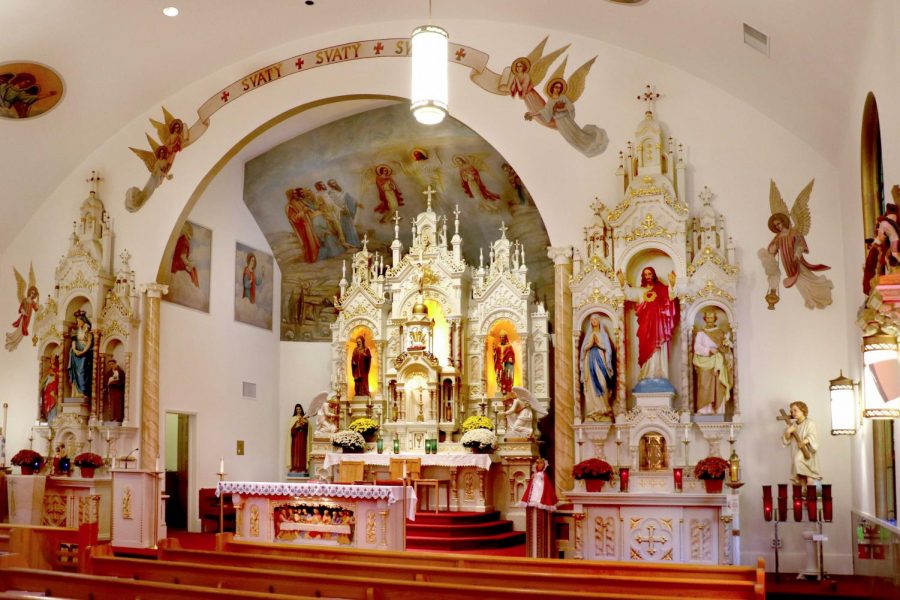Slovak group aims to preserve culture
Altar of the Saint Cyril and Methodius Church in Windber.
November 13, 2019
Stained glass windows and ceiling paintings were witnesses at a Slovak Heritage Association of the Laurel Highlands meeting Oct. 27 at Saint Cyril and Methodius Church in Windber.
About 20 members and guests sat on lit wooden benches across from the 110-year old church’s High and Last Supper Altar. On both sides were positioned the statues of the two saints.
The Laurel Highlands Association was formed in the early 1990s.
According to a newsletter under the title “News and Highlights,” the organization’s mission is to preserve, study, celebrate, share and teach the Slavic heritage.
In 2005, Susan Kalcik became president, and Nick Bocher became vice president and treasurer. They both edited the quarterly newsletter. Kalcik took care of the text, and Bocher took care of photos and layout.
“We have a very interesting social program for every meeting,” said Kalcik.
“We invite speakers, organize crafts for holidays and study Slovak traditions,” Kalcik said.
Bocher said association members stay involved in Slovak life.
“We had three trips to Slovakia so far. Recently, we visited Susan’s grandmother’s village in Eastern Slovakia, close to Ukraine.
“We came by taxi. One woman opened doors for us and immediately remembered Susan’s last name. It was a nice surprise for us, because she did not know we were coming,” said Bocher.
Tom Papinchak, a deacon for 21 years, and Bill Cominsky, chair of the parish council, gave a tour of the Catholic Church.
“My father and grandfather built this church,” said Papinchak.
“Slovak people immigrated to Windber, and they found a tough life here. They came for a better life. Some of them made it, some did not. They worked in the coal and steel companies and were not allowed to mix with Polish people.
“But they were mixed in the church. At that time in Windber, there were three churches: St. Anthony, St. Elizabeth and St. Cyril and Methodius.”
“It is a lot of history in this church,” said Cominsky.
“Slovak people are scavengers. They started to build a basement in 1906. In 1909, the church was open and 3, 000 people stood up outside.”
“My mother painted (the images) for one year’s Stations of the Cross, and my dad helped her with plaster on the Stations,” he said.
Cominsky also runs a parish Facebook page and belongs to the Slovak Club.
At a table in the basement, filled with cakes, salads, shrimps and wine, sat Dennis Ragan, a retired marketing manager.
“I came specially from Indiana to attend this atypical meeting. I am not very often in Johnstown,” he said.
“I started to learn the Slovak language in 1999 at the University of Pittsburgh.
“But, one time, I met some Polish people in Washington, D.C., and I could not understand what they were talking about, despite Slovak and Polish (being) very similar languages. So I should try harder to learn,” said Ragan.

